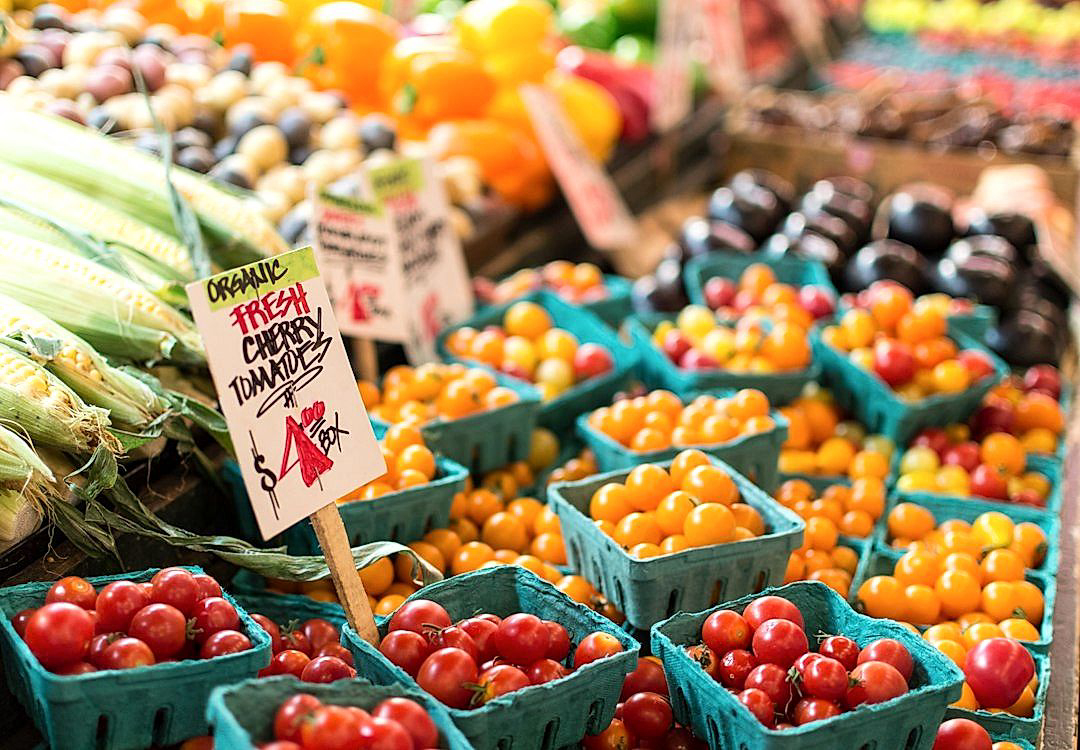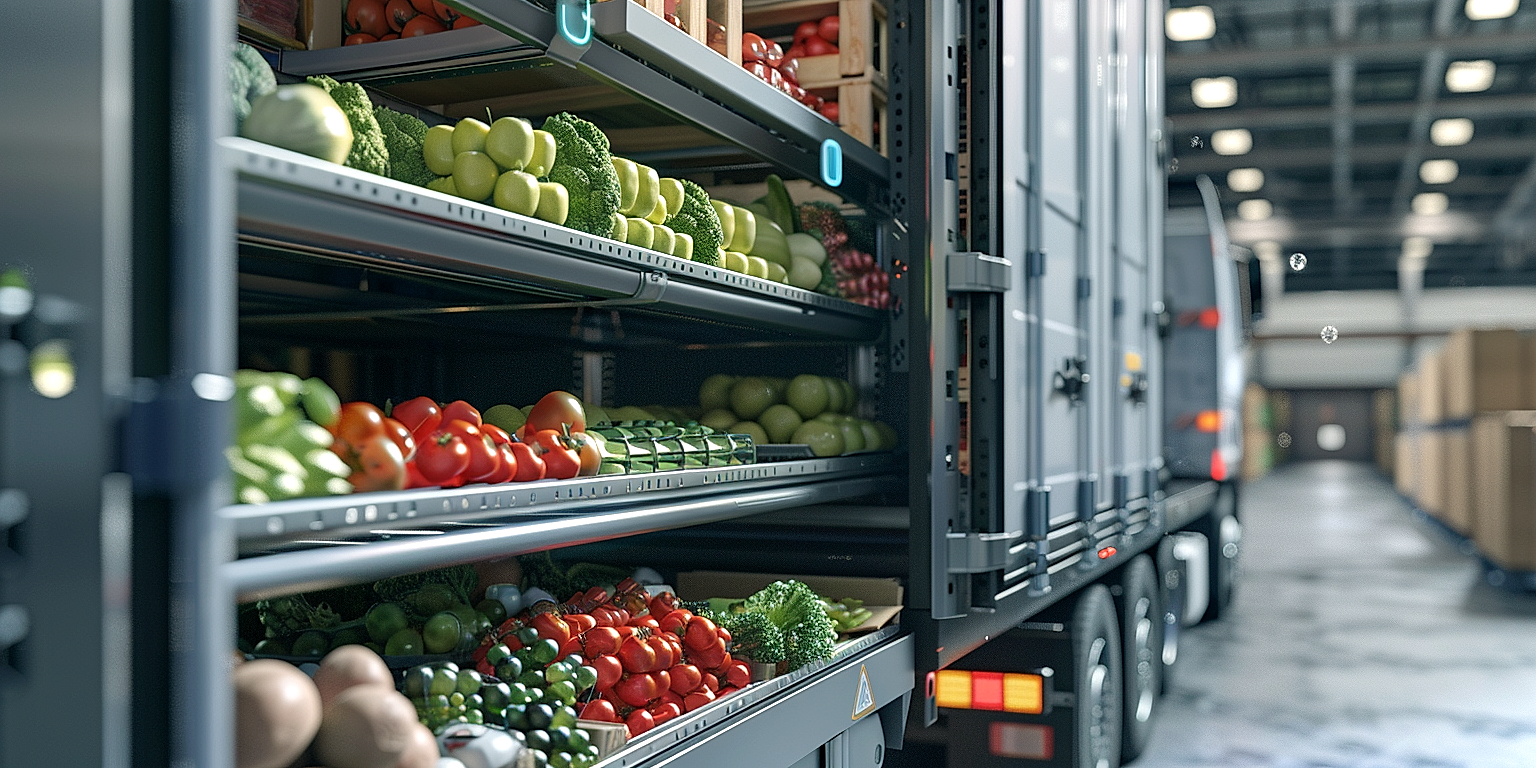Advancements in technology are playing an indispensable role in transforming the landscape of logistics in the produce shipping industry.
Efficiency and accuracy have become the cornerstones of streamlined operations, spurred on by the proliferation of innovative tools.
From tracking perishable goods to optimizing delivery routes, these instrumental devices are rewriting the rules for success.
They aim to reduce waste, boost productivity, and enhance customer satisfaction.
However, integrating these technologies can often seem daunting to businesses.
This article aims to delve deeper into these indispensable innovations, elucidating their function and imparting practical advice on how to seamlessly implement them into everyday operations.
Innovative Tools For Streamlining Logistics In Produce Shipping
1. Automated Inventory Tracking and Management Software
The utilization of Automated Inventory Tracking and Management Software has become a groundbreaking tool for streamlining logistics in the produce shipping industry.
The software provides real-time and accurate inventory data which is critical for managing perishable goods effectively.
It minimizes human errors that occur in manual tracking, allowing for a more efficient and reliable inventory management process.
Through advance algorithms, this software is capable of predicting inventory needs based on historical sales data, circumventing the issue of overstocking or understocking.
This automated system proves to be a significant time-saver, as it relieves staff from time-consuming manual inventory checks, allowing them to focus on other important operations.
Moreover, it assists in maintaining the freshness of the produce by monitoring the expiration dates and alerting the staff about any approaching spoiled goods.
Also, this innovative tool is equipped with barcode scanning and RFID capabilities for swift and easy updating and tracking of inventory.
With automated inventory tracking, order fulfillment is accelerated which results in faster deliveries, improving customer satisfaction rates.
The software’s automated reporting presents business owners with insightful information for strategic decision-making.
Furthermore, it simplifies the complex process of accounting with its ability to integrate smoothly with accounting software.
In the event of an audit, having accurate inventory records at the ready can save considerable time and resources.
The software can predict future product demands which makes the planning of purchasing and logistics operations simpler and more precise.
This automated software is flexible and easily customizable to cater to specific business needs and requirements, hence expanding its usability.
In the event of inventory discrepancies, this advanced tool can provide instant alerts, allowing for immediate corrective actions.
The software’s scalability provides the capability to grow with the business and adapt to increased product range and volume.
In essence, automated inventory tracking and management software is an indispensable tool in the contemporary produce shipping industry, given the many logistical benefits it brings.
2. AI-driven demand forecasting tools
The emergence of AI-driven demand forecasting tools is revolutionizing the logistics industry, particularly in the context of produce shipping.
Such tools leverage Artificial Intelligence (AI) capabilities to provide precise and reliable predictions regarding future demand for different types of produces.
These tools are not only increasing operational efficiency but also significantly reducing the chances of spoilage due to overstocking or understocking.
Using machine learning algorithms, these systems can analyze past sales data, seasonal trends, and other related factors to accurately predict future demand.
The implementation of AI-driven demand forecasting tools in the logistic processes of produce shipping allows for improved inventory management and optimized resource utilization.
Instead of relying on human guesswork or simplistic calculation models, businesses can now trust AI-driven tools to accurately forecast demand.
This helps to ensure the right amount of produce is kept in stock – not too much to cause wastage and not too little to result in missed sales opportunities.
Moreover, by forecasting demand more accurately, businesses can make data-driven decisions about when to harvest, pack, and ship produce.
With the ability to anticipate peak demand periods, they can adjust their operations accordingly to minimize costs and maximize profits.
Furthermore, AI-driven demand forecasting tools are also enhancing supplier relationships.
By providing accurate predictions, these tools help businesses to communicate more effectively with their suppliers about their needs, avoiding any last-minute panic and ensuring smooth operations.
Given the perishable nature of produce, the importance of accurate demand forecasting cannot be overemphasized.
AI-driven demand forecasting tools thus serve as an innovative solution to streamline logistics in produce shipping, enhancing operational efficiency and profitability while reducing waste.
Embracing such advanced technologies can greatly contribute to making produce shipping a sustainable and efficient process in the long run.
Thus, AI-driven demand forecasting tools are one of the key aspects of the digital transformation trend in the logistics industry.
3. Real-time GPS Tracking Applications
The introduction of real-time GPS tracking applications has served as a game-changer in the logistics industry, particularly in produce shipping.
With such innovative tools, managers can track their produce shipping consignments, down to the location and estimated time of arrival, improving efficiency and visibility in the supply chain.
The applications offer live tracking abilities, providing minute-by-minute updates that allow a comprehensive understanding of the shipping process at any given time.
This real-time data is vital in optimizing transportation routes, ensuring that produce is shipped in the most cost-effective and efficient manner.
Notably, real-time GPS tracking applications go past just regular tracking; they afford companies the ability to make swift, knowledgeable decisions that significantly improve their logistics process.
They help neutralize potential disruptions by providing prompt alerts of any delays, such as traffic snarls or vehicle breakdowns.
This allows for quicker problem-solving and decision-making, thereby keeping the shipping process running smoothly.
Furthermore, they play a vital role in meeting customer expectations, as tracking details can be shared with customers for their peace of mind and satisfactory customer service.
This inevitably leads to boosted customer trust and confidence in a company’s capacity to deliver fresh produce promptly.
GPS tracking applications are also used to monitor vehicle usage, including mileage, fuel consumption, and driver behavior, creating opportunities for improving efficiency and cost-savings.
Being privy to this data gives companies insights on how to improve operations – for instance, reducing fuel consumption, maintaining vehicle condition, and enhancing driver safety protocols.
Real-time GPS tracking applications also provide historical data which companies can leverage to study trends, make informed predictions, and strategize for future operations.
This capability is beneficial in forecasting potential challenges, planning for peak seasons, or setting performance benchmarks.
To succeed in the demanding logistics industry, companies must incorporate emerging technologies such as real-time GPS tracking applications into their operations.
By streamlining transportation logistics, these tools contribute significantly to enhancing operational efficiency, saving costs, and ultimately, ensuring the timely delivery of fresh, high-quality produce.
4. Blockchain technology for traceability
Blockchain technology represents a fascinating layer of progress in the realm of produce shipping logistics.
Its underlying premise, which operates on a structure of traceability and transparency, makes it an ideal, proactive solution for tracking shipped produce.
By implementing this versatile technology, businesses and consumers alike can gain access to the full cycle of a product’s transportation, from farm to retail shelf.
Blockchain can effectively streamline logistics by creating a trustworthy and immutable ledger that reflects each step taken in the process of shipping.
Their decentralized and secure nature are vital for combating fraud, ensuring produce quality, and maintaining transparency throughout the supply chain.
The application of blockchain technology makes it possible to monitor with great precision, even in real-time, the status of fruit or vegetable shipments, including variables such as temperature, location, and handling details.
Blockchain technology aids in the elimination of mishandling and reducing damages to the product.
This furnishes important quality assurance, thus improving customer satisfaction and fostering customer loyalty.
Moreover, the usage of blockchain aids in reducing wastage as problems are identified faster, with remedies applied more swiftly in the shipment process.
Moreover, such technology facilitates the simultaneous tracking and recording of batches of agricultural produce, leading to greater efficiency.
Due to it decentralized nature, blockchain technology is also robust against cyber threats, hence ensuring the integrity of logistics data.
The incorporation of blockchain technology also means that information can be shared in real-time between all parties.
This decreases communication delay, helping to reduce transit times and promote better coordination among various stakeholders in the logistics chain.
More importantly, blockchain technology in logistics can boost consumer confidence as it promotes transparency about the origins and state of their purchased produce.
Ensure a smooth and integrity driven logistical system, Blockchain technology for traceability stands as a powerful tool awaiting more comprehensive implementation in the future of agricultural produce shipping.
5. Automated Warehouse Management System
An automated warehouse management system is a pivotal part of streamlining logistics in produce shipping.
This innovative tool works to increase the efficiency and accuracy of warehouse operations.
It does this by automating the various processes such as receiving, put-away, picking, packing, and shipping of goods.
Such a system implements advanced technologies such as barcoding, radio frequency identification (RFID), and voice recognition to facilitate these processes.
Its implementation can drastically reduce manual labor, minimize human errors, and improve productivity levels.
Using an automated warehouse management system delivers real-time visibility into inventory, allowing businesses to make informed decisions regarding their logistics and delivery mechanisms.
In the context of produce shipping, where perishable goods need to be efficiently handled and dispatched, such systems are invaluable.
The system keeps track of the shipment, right from the moment it enters the warehouse till it’s loaded for dispatch.
This makes it easier to handle high volume traffic and quick turnaround times associated with produce shipping.
In addition to this, the system’s in-built analytics can predict future demand, aiding businesses in better planning their inventory.
Automated warehouse management systems also support the integration with other systems such as transportation management systems (TMS), ERP systems, and supply chain management software.
This aids in achieving end-to-end visibility of the logistics process, resulting in a smoother and more streamlined workflow.
Moreover, these systems are scalable, meaning they can adapt to the growing needs of a business.
Features like customizable workflows and user-defined fields make it easier to mold the system according to the unique requirements of each operation.
Lastly, businesses that have implemented an automated warehouse management system have reported significant cost savings.
These savings result from less reliance on manual labor, reduced errors, improved inventory and order accuracy, and more efficient use of warehouse space.
6. IoT Devices for Temperature Control
In the realm of produce shipping logistics, maintaining optimal temperature conditions is crucial for preserving the quality and freshness of the produce.
The Internet of Things (IoT) has emerged as a game-changing technology in this regard, with IoT devices being used for temperature control in the supply chain.
These devices offer automated temperature monitoring, reducing the reliance on manual checks that are time-consuming and prone to error.
IoT temperature control devices are equipped with sensors that send real-time data on temperature fluctuations to a centralized system.
This data is then analyzed and swift actions can be taken if any anomalies are detected.
Incorporating IoT devices in the logistical process enhances the efficiency of operations by providing valuable data on storage conditions.
Thus, at any given point in time, shippers have a clear understanding of the condition of the produce.
IoT devices for temperature control enable precision in maintaining optimal conditions, thereby minimizing wastage due to spoilage.
Furthermore, they help create a traceability record that can be useful in identifying and troubleshooting any issues in the supply chain.
For instance, if a particular batch of produce has a high spoilage level, data from the IoT devices can help identify at what point in the supply chain the temperature control failed.
Moreover, the implementation of IoT devices helps in complying with food safety standards, which is a major concern in the produce shipping industry.
It’s worth noting that different types of produce require different storage temperatures and humidity levels.
For example, bananas need to be stored at a higher temperature than avocados. Using IoT devices, such specific requirements can be easily met, ensuring the longevity and quality of the produce.
Ultimately, the use of IoT devices for temperature control in produce shipping reflects the industry’s adaptability and willingness to leverage technological advances to enhance operational efficiency.
Innovation and precision are the cornerstones of employing IoT devices for temperature control. This tool is revolutionizing the way produce shipping logistics are managed and improving the overall quality of delivered goods.
7. Drone Technology for Faster Delivery
In the engine room of innovation and technology in produce shipping, drone technology stands as a game-changer.
This revolutionary tool could lead to a massive reduction in delivery times and elevate operational efficiency within the industry.
The ongoing advancements and increasing reliability of drone technology opens up new frontiers for its application in logistics.
With drone technology, producers, and logistics companies can swiftly transport goods over relatively short distances without traffic hindrances and roadway congestion.
This is dabbed the ‘last-mile problem’, an issue that drones can effectively navigate and resolve.
Additionally, the swift propelling power of drones enables the reduction of spoilage rates due to the significantly reduced time goods spend in transit.
Blockchain-enabled drones, in particular, offer an added advantage of enhancing transparency and traceability in the delivery process.
This is accomplished by attaching smart contracts to shipments, allowing stakeholders to monitor real-time product movement, which promotes accountability.
Through drone technology, supply chain stakeholders can unlock a new level of efficiency, drastically reducing the time-to-delivery and enhancing the overall customer experience.
Apart from speed, drone technology can reduce the carbon footprint of produce shipping by replacing motorized vehicles with eco-friendly alternatives.
This aligns with the global shift towards more sustainable and environmentally friendly approaches in business operations.
Implementing drones in the delivery process can also lead to significant cost savings, primarily through reduced fuel consumption and maintenance costs associated with motor vehicles.
However, the journey towards full implementation of drone technology in produce shipping is not without challenges, regulatory hurdles being a key impediment.
For instance, evolving regulations concerning airspace, drone usage, and safety standards pose a significant challenge, requiring constant industry lobbying and modifications to fit the regulatory landscape.
Nevertheless, drone technology’s immense potential for reshaping the logistics in produce shipping cannot be overlooked.
Through drone technology, supply chain stakeholders can unlock a new level of efficiency, drastically reducing the time-to-delivery and enhancing the overall customer experience.
The Bottom Line
Driven by advancements in artificial intelligence, blockchain, Internet of Things and GPS technology, the logistics sector is undergoing a significant transformation.
Automated inventory management and warehousing systems are paving the way for seamless operations, whilst AI-driven tools are enhancing the accuracy of demand forecasting.
Real-time GPS applications and drone technology are making faster, efficient deliveries a reality and, through a combination of IoT devices and blockchain, suppliers are able to maintain optimal temperatures and ensure product traceability.
As adoption of these technologies continues to grow, businesses within the logistics sector will be well-equipped to streamline their processes, enhance their services, and ultimately, drive growth in a vastly competitive marketplace.




